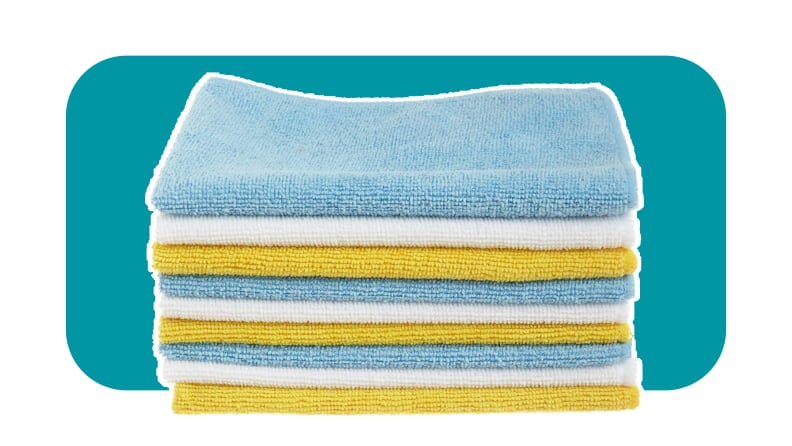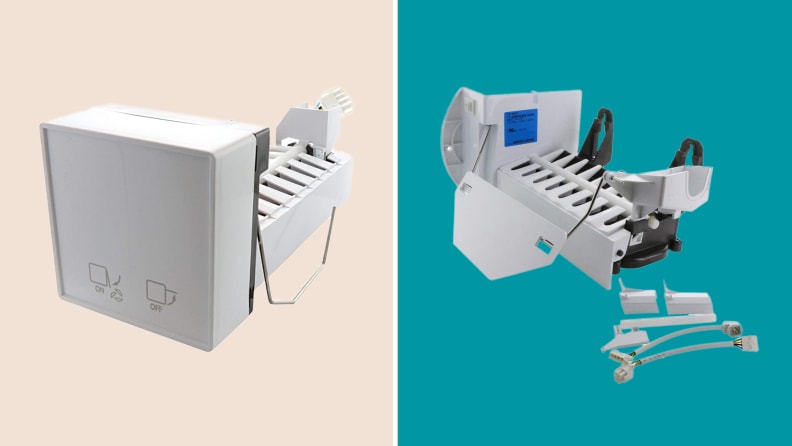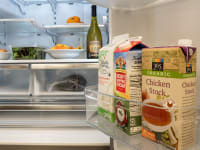7 reasons your refrigerator ice maker is broken—and how to fix it
Ice maker gone cold? Here’s how to troubleshoot.
Products are chosen independently by our editors. Purchases made through our links may earn us a commission.
In the modern world, we don’t let much get between us and our ice.
In the 1800s natural ice was in such high demand that it was mined and shipped globally. This was accomplished by way of a vast industrial supply chain of wagons, boats, and ice houses.
Today, most of us take the ice maker in our refrigerator for granted. That is of course, until it quits on us.
Your refrigerator ice maker might feel like magic, but it’s not. Refrigerator ice maker problems are usually an easy fix.
Here are common refrigerator ice maker problems and how to fix them.
How does a refrigerator ice maker work?
Everyone is familiar with the logic of a simple plastic ice cube tray. Water is poured into pockets in the tray and left in the cold to freeze.
Trays are then twisted by hand to unstick the cubes, cracking any frozen ice connections between them. Now, cubes are ready to chill anything from soda to sweet tea.
Most mechanical refrigerator ice makers come with a similar mechanism.
In these systems, a rear intake valve pumps water from the water line connection behind your fridge and into the freezer tray. Usually, this water passes through a water filter before filling the pockets in your ice maker.
Once a thermostat detects that the ice cubes have frozen, a heater beneath the tray turns on. This warming cycle loosens the cubes.
A separate ejector arm then pushes the cubes from their pockets and into the bin.
Most refrigerator ice machines include a rigid metal bar called a control arm that rests atop the ice cube storage bin. After a batch of ice cubes ejects into the bin, this bar drops.
When a bin of ice prevents the control arm from falling past a certain point, the mechanical ice maker shuts off. The full ice bin keeps it from overflowing and filling your freezer with ever-expanding mountains of ice.
If the bar is able to fall all the way down, then the ice maker starts on the next batch.
What to do if my refrigerator ice maker stops working? How to fix ice maker
1. Take a look at the control arm and the power switch
If your ice maker isn’t producing ice, yet there is ice in the bin, the first thing to do is check the bar shutoff. This bar is called the control arm.
If the control arm is raised, check to see if it's caught on something by carefully trying to push it back down. One of the most common issues happens when the arm of the ice maker becomes jammed. This triggers the ice maker to turn off.
Some newer fridges enable you to switch your ice maker on or off with a power switch or digital display. Make sure yours didn't accidentally switch off.
2. Check the installation
Ice makers should be installed level. Likewise, the refrigerator itself should be level. Double-check the hardware on your ice maker and ensure that it is screwed in well and undamaged.
While you're at it, double-check that your refrigerator is level and correct it if not.
3. Clean or replace the water filter
Most modern ice machines include a water filter between the water supply line and the ice maker.
Smart refrigerators will often notify you when the filter needs changing. If it's been a while since you've changed the filter, there's a chance it is clogged with mineral deposits. If your ice maker isn’t getting enough water, it’s a good idea to check this.

This water filter lasts about five years before it's time for a replacement.
4. Check for an adjustable water flow
Some refrigerators include a control that allows you to adjust the flow of water into the ice maker. This helps control the cube size.
If this control is set too low it can make your cubes smaller than ideal. If it's too high it can cause your ice maker to freeze over.
If you see these symptoms, check to make sure the control isn’t allowing too much or too little water into the ice maker.
5. Inspect your freezer's temperature
Refrigerator temperature issues might be more common than you think. If your ice maker doesn't hold ice, this could be a sign that your freezer is failing to maintain the proper temperature.
Before you worry, look for a temperature control dial. Some freezers give you control over the temperature. Set it close to 0° Fahrenheit. You may have deeper issues if it fails to maintain this temperature.
6. Unfreeze the water intake

A handy pack of microfiber cloths can soak up a leaky water line.
Sometimes the water intake for the ice maker can freeze. This can result in small ice cubes. Sometimes the ice maker may not get any water, resulting in no ice production. If you suspect this could be the case, it’s time to defrost your water line.
Start by unplugging your refrigerator. Usually, ice makers connect to the wall of your freezer with two screws. Use a screwdriver to remove your ice maker and set it on a clean rag.
Microfiber rags like the Amazon Basics 24 Pack do a swell job with absorption.

These microfiber clothes absorb and dry quickly for easy cleaning.
There are two plugs in the rear—one is the water intake, and the other is the power intake.
Heat the water intake valve by plugging a hair dryer into a grounded outlet nearby. Without letting the hair dryer touch water, direct the warm air from the blow dryer into the valve.
Be careful not to overheat the valve—use medium heat with some motion.
When you plug your ice maker in, double-check that the freezer temperature dial is accurate. If the line continues to freeze, you may have an issue with the automatic water supply valve. This could result in leaky water dripping into the pipe.
7. Inspect the valve and your home's water line
Most refrigerators use an electromagnetic solenoid water valve. This valve connects to your home's water line in the rear of the fridge. When working properly, this valve opens for a few seconds when triggered, letting a few ounces of water into the system.
You can check whether your home’s water line is working by unplugging your refrigerator and opening your home’s water connection. Have a bucket, water jug, or a rag on hand when you check the water.
If there’s an issue with your home’s water line, we recommend calling in a professional to examine the problem.
Make sure you find the correct part for your refrigerator.

This water valve replacement is compatible with certain GE refrigerators.
Broken refrigerator ice maker? There’s always a replacement

If a replacement unit is necessary, these options from Kitchen Basics 101 are compatible with a variety of refrigerators, but be sure to check first.
It might not seem intuitive, but for many common refrigerators, replacing an ice maker outright is often simpler than ice maker repair. Many ice maker replacements are compatible with a few brands of refrigerators.
This Kitchen Basics 101 model is compatible with both Electrolux and Frigidaire. Kitchen Basics 101 also makes a model for GE refrigerators.
As with any replacement part, double-check its compatibility with your fridge before you buy.
Another idea is to consider a dedicated ice maker or portable ice maker, some of which will supply you with literal pounds of ice.

This ice maker replacement is compatible with certain Frigidaire and Electrolux refrigerator models.

Replace the ice maker in your GE refrigerator with this kit.


